A poorly chosen approach to attracting backlinks can do significant damage to your site, lowering its ranking and leading to pessimization by search engines.
In this article, we’ll look at the top 5 most common link building mistakes you should avoid to keep your site in position.
Mistake 1: Inadequate selection of competitive queries, and as a consequence, strategy and budget
Improper query selection can result in you competing with overly strong competitors, or alternatively, selecting low-competitive queries that won’t bring in significant traffic. As a result, your link building strategy could be ineffective and your budget wasted.
Our experiment confirmed the importance of a proper selection of competitive requests in link building strategy – the number of external links from other domains was growing, but it did not lead to an increase in traffic or improve positioning.

The number of domains is growing

But traffic and keys are not (TOP 3-10)
Mistake 2: Disturbing the dynamics (too much, too little, breaks)
One of the common flaws in link building is breaking the momentum of link building. This means that you may gather a lot of links in a short period and then not be active for a long time. This misallocation can make Google suspicious and cause positions to deteriorate.
We did an experiment in which we put a large number of “easy” links for a short period of time. As a result, we found that this approach had no effect on traffic.
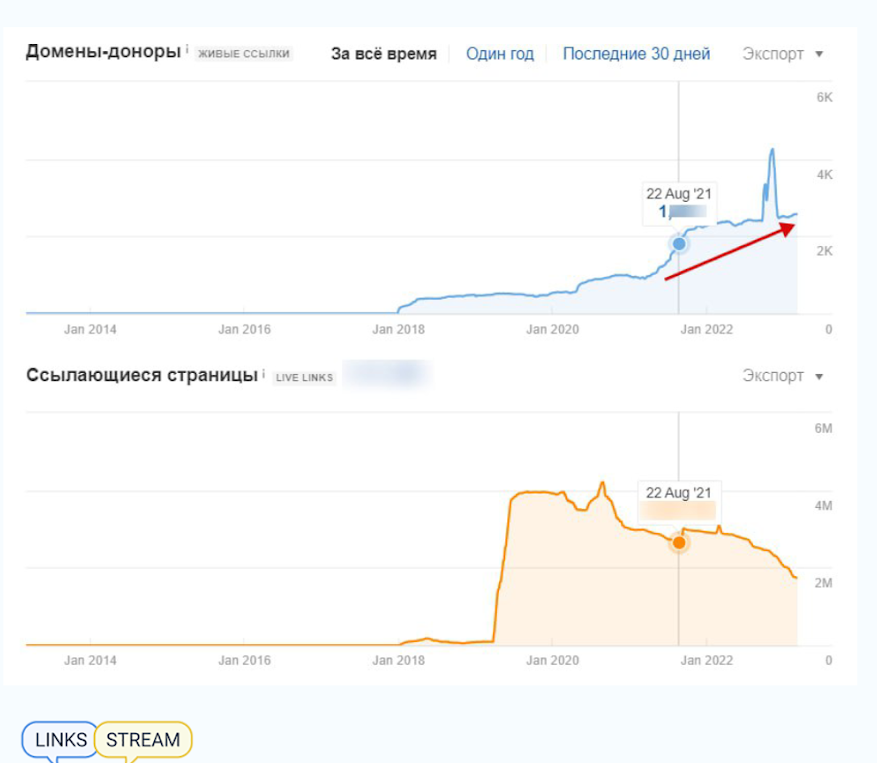
A large number of lightweight links are placed
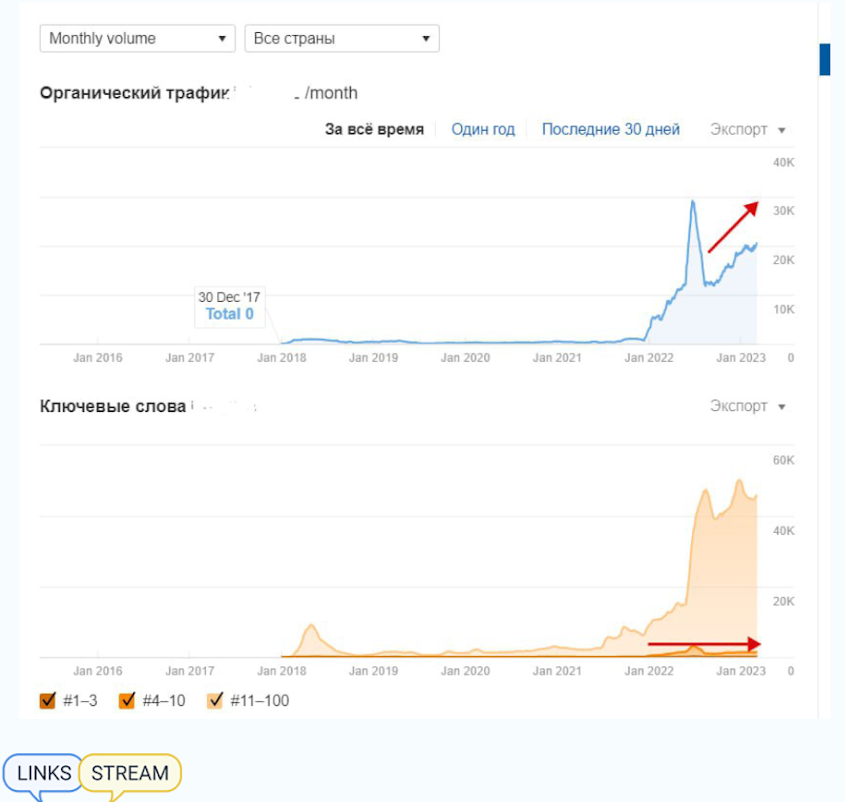
The impact on rankings is 0. Traffic is growing by branded queries
Mistake 3: Improper selection of link types (most nofollow/dofollow, light/heavy links)
Selecting the right type of links is an important part of a successful link building strategy. For example, too many nofollow links can kill the positive effect of quality links. It’s important to strike a reasonable balance between dofollow- and nofollow-links, and to choose quality links that maintain the site’s authority.
Mistake 4: Spamming the anchor list
An anchor is the text part that is clicked on to follow a link. Using the same-type, spammy anchors is grounds for Google sanctions. We recommend putting natural anchors that match the context.
We’ve posted a lot of guest posts with the same anchor links, and as a result we got sanctions because of spam.
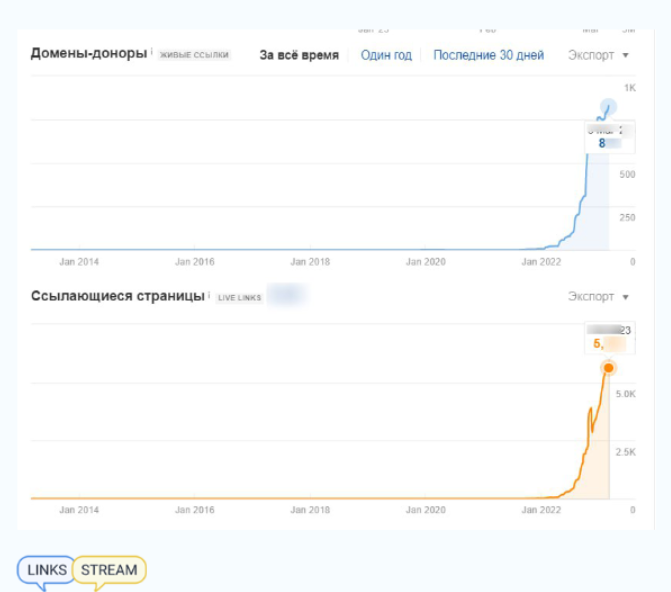
Aggressive linking strategy with a large number of anchor posts
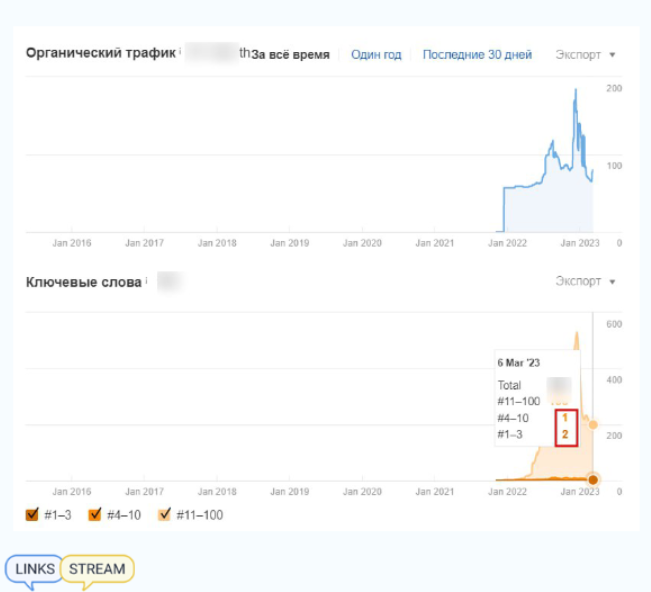
As expected, host sanctions for spam
Mistake 5: Getting links from low-quality sites
Instead of hunting for a large number of links, it’s better to focus on quality. Focus your efforts on getting links from reputable, well-known and related to your topic.
Carefully check the sites you are getting links from and make sure they are of quality. To check the quality of the sites you get links from, pay attention to the following two aspects:
- The authority of the site.
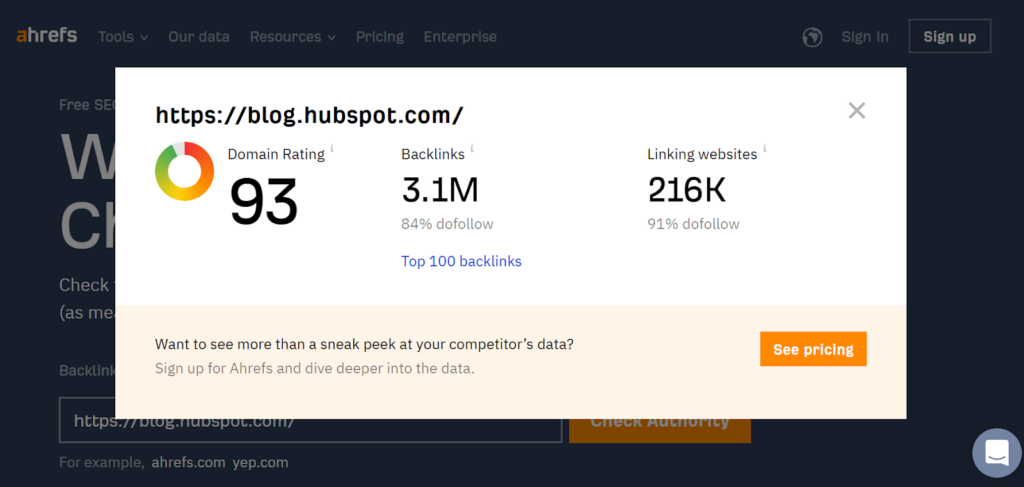
Check the Domain Rating with Ahrefs. The higher the rating, the better.
2. Content Quality
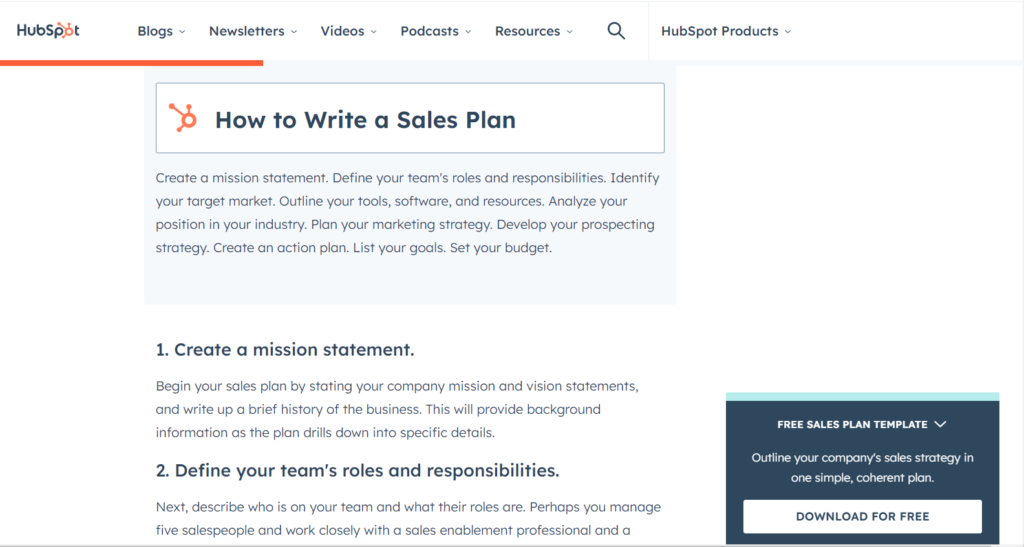
Make sure the site has high-quality and relevant content related to your topic. It should be informative, relevant, and useful to users.
Avoiding basic mistakes will help you build an effective link building strategy that will have a positive impact on your site’s position in Google. Remember that the quality, relevance and naturalness of your links are the key factors for successful link building.
The material is taken from Svetlana Velichko speech at the Webpromoexperts conference, which you can view at https://www.youtube.com/watch?v=sqzaLMWeolE
